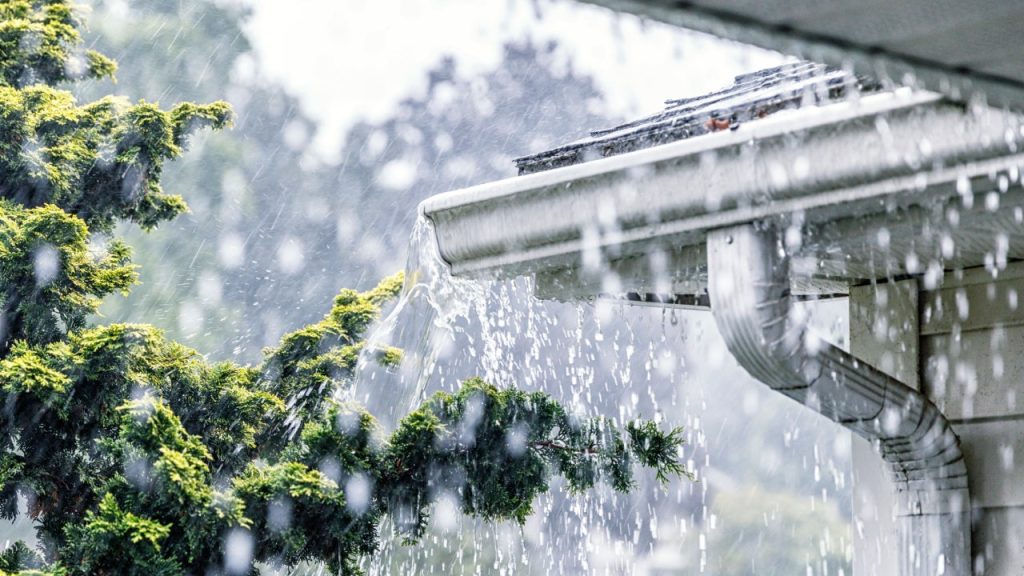Extreme weather events are an increasingly common part of life, both nationally and globally. Defined as unusually severe weather and climate conditions that have the potential to devastate communities, extreme weather ranges from heat waves to deep freezes, from droughts to heavy downpours; it includes tornadoes, tropical cyclones and floods.
Disastrous weather conditions can occur any time of year. These types of events also vary by region, with southeast states being more prone to heavy rains, hurricanes and tropical storms, while western states are more susceptible to scorching heat waves and drought and the Midwest is impacted by tornadoes.
Though certain disasters are associated with certain times of year (“hurricane season” in the early autumn, tornadoes in late spring/early summer, etc.) extreme weather events are not necessarily predictable. But they do seem to be increasing as a result of global warming. While not the sole cause, “extreme weather events …are likely to become more frequent or more intense with human-induced climate change,” according to the Environmental Protection Agency.
Extreme weather carries not just a physical but a steep financial cost, as well. In 2022, weather and climate disasters caused $165 billion in damages nationally. Those costs can hit homeowners especially hard. In the August 2023 Bankrate Extreme Weather survey, 32 percent of American adults said they’d incurred higher energy costs due to an extreme weather event within the past 10 years, and 20 percent incurred home or property damage,
As a homeowner, it’s important to be aware of the financial impacts caused by extreme weather — and the steps you can take to prepare and potentially minimize your out-of-pocket costs.
Key extreme weather statistics
- The United States has experienced 23 separate billion-dollar disasters so far in 2023, the largest number of billion-dollar disasters since record-keeping started in 1980.
- Since 1980, the U.S. has experienced 371 separate weather and climate disasters in which the overall cost of damages reached at least $1 billion.
- About $20 billion is being spent each year to repair homes following major disasters and minor storms, according to Harvard University’s Joint Center for Housing Studies.
- Americans spend an average of $1,953 on emergency repair costs, according to the 2022 State of Home Spending report from the home services site Angi — up from $419 in 2019.
- The average temperature for August 2023 across the contiguous U.S. was 74.4 degrees F — 2.3 degrees above average. Florida, Louisiana and Mississippi all experienced their hottest August ever recorded in 2023, while Texas experienced its second-hottest August, according to the National Oceanic and Atmospheric Administration (NOAA).
- With nearly 90% of U.S. households using air conditioning, energy bills typically tend to be highest in the peak of summer — June, July and August, according to the U.S. Energy Information Administration.
Financial implications of extreme weather
Over half (57 percent) of U.S. adults have incurred costs in the last 10 years due to extreme weather, according to a Bankrate survey.
Source: Bankrate survey, August 29-31, 2023
In addition, when asked about future extreme weather events, 57 percent of people said that it will have a negative impact on their finances in the next decade, including 33 percent who expect “somewhat negative” effects and 24 percent who expect “very negative” effects.
Extreme weather’s financial impact on your home
Extreme weather can have a range of ramifications for your home, from immediate costly repairs to more frequent equipment replacement to a gradual rise in energy and utility bills (due to damages in power grids and infrastructure). As a homeowner, it’s important to understand the types of weather events that may be prevalent in the region where you live and take steps to mitigate the financial fallout when possible.
“The reality is that climate change presents a heightened threat to the financial well-being of individuals and households, including homeowners,” says Mark Hamrick, Bankrate’s senior economic analyst.
Property damage and repair costs
Property damage can occur in many ways during weather events.
“Weather-related damages can include fallen or damaged trees, roof damage, loss of heat and power, burst pipes, flooding, and structural issues like cracks in the foundation or walkways due to temperature fluctuations,” says Dave Steckel, home expert with Thumbtack, a home improvement site that pairs contractors and clients.
Emergency repair costs resulting from weather events can range from a few hundred dollars for minor issues to several thousand dollars or more for extensive projects, especially in the case of significant structural damage.
The cost to repair water damage, for instance, is about $3,610 but can be as low as $450 or as high as $15,000, according to Angi.
As extreme weather events become more frequent, the number of home maintenance and repair projects being undertaken by homeowners are also ticking upward. In 2023, Thumbtack saw water damage cleanup and restoration projects increase 91 percent year-over-year, Steckel says. There’s also been a 134 percent year-over-year increase in plumbing inspections, 102 percent increase in water treatment system installations compared to one year prior, and a 53 percent increase in generator repairs.
Home insurance coverage and deductibles
With extreme weather events causing billions of dollars in damages, the cost of home insurance is soaring. Insurers are increasing the premiums they charge homeowners in order to cover their own rising expenses.
“Increasingly, private insurance carriers have been exiting markets where risk of natural disasters are seen as high. And where coverage has been available, the costs have been rising,” says Hamrick.
This situation applies especially in states that are most severely impacted by extreme weather or natural disasters like Florida, Texas and California. In Florida alone, the average homeowners insurance premium jumped 20 percent between 2022 to 2023, according to proprietary data provided by Quadrant Information Services. Across the United States, the average cost of homeowners insurance is $1,428 per year for $250,000 in dwelling coverage.
The situation is not likely to get any better moving forward. The increasing frequency of extreme weather and natural disasters is expected to cause home insurance costs to continue to march further upward in coming years.
Loss of property value
Another ramification of extreme weather for homeowners is the potential decline in property values. Of course, damaged homes can be repaired and sometimes even appreciate as a result. But in areas that are particularly hard hit by an extreme weather event — or a few years’ worth of them — the real estate market may start to decline. Reselling a home in such a region may prove challenging.
In the worst-case scenario, if a once-expensive area tumbles drastically due its “disaster-zone” rap, homeowners who bought at the market’s peak could end up underwater on their mortgages.
Other general financial impacts of extreme weather
Energy costs are soaring across the United States. Increasingly harsh winters are driving higher heating bills, while excessive heatwaves and record-breaking heat spells are forcing a greater reliance on air conditioning. The growing expenses associated with this new reality are another factor that requires financial consideration, even if just budgeting more for utility bills.
The majority (81 percent) of U.S. adults have already incurred costs in the last 10 years due to extreme weather, or paid higher energy bills due to summer 2023’s extreme heat, according to Bankrate’s survey. What’s more, during this past brutally hot summer, 53 percent say higher-than-usual electricity bills strained their finances.
Here too, the situation is likely to continue to be challenging for the foreseeable future. The U.S. Environmental Protection Agency is expecting extreme weather to become more common in the coming years. NOAA has also indicated this type of weather is here to stay, saying the high activity of such high-cost disruptive events that affect people’s lives and livelihoods in recent years “is becoming the new normal.”
The economic repercussions are likely to spread well beyond individuals and impact businesses and their productivity, as well as consumer confidence and spending, all of which will have broad financial ramifications for society. Additionally, as extreme weather impacts communities and strains infrastructure, it may also cause state governments to increase property taxes to cover their increased costs.
The reality is that climate change presents a heightened threat to the financial well-being of individuals and households, including homeowners.
— Mark Hamrick, Bankrate Senior Economic Analyst
Mitigating financial risks tied to homes
As extreme weather becomes a more common part of daily life, it’s increasingly important for homeowners to prepare. In addition to doing routine maintenance, you’ll also want to weatherize and proactively improve your home to help minimize potential damage from extreme weather.
Angi’s annual “State of Home Spending” report found that 40 percent of respondent homeowners were impacted by an extreme weather event in 2022 and of those who did experience an emergency, a majority — 74 percent — are either actively taking on mitigation projects or plan to complete a mitigation project in 2023.
“Depending on which region you live in, certain times of year may be more prone to extreme weather events, but now more than ever, homeowners should always be prepared for weather impacting their home,” says Angie Hicks, chief customer officer with Angi.
Knowing ahead of season what risks your home might face and taking action to prevent such risks is a critical step. Preventative measures might include cutting down or trimming trees that have the potential to fall. “Some of the most common damage is from tree limbs and trees hitting a home from high winds and storms or heavy snow. This is why it’s incredibly important to make sure to clear loose branches and remove trees that pose a risk to your home throughout the year,” says Hicks.
Some of the other steps homeowners can take include:
- Applying window film or tinting to minimize the impact of extreme heat
- Adding a sump pump in areas more prone to flooding
- Installing a generator as a back-up power source
- Installing a heated driveway or pathway to areas susceptible to icing over
Insurance coverage
Being familiar with what exactly is covered and how much coverage you have in place is another essential step to being prepared for extreme weather events. It’s an effort that will help protect you financially, particularly when it comes to repairing or rebuilding, should that be needed in the event of a disaster. You’ll want to be sure you have the right level of replacement coverage in place, taking into account any impact of climate change in your area — like if your southern state is now experiencing frequent ice storms in winter, say.
“Regularly reviewing and updating homeowners’ insurance ensures that coverage remains aligned with the home’s value and the specific risks posed by the local environment,” says Gregg Barrett, a property and casualty insurance expert and CEO of the Waterstreet Company, a property and casualty insurance industry consultancy based in Kalispell, Montana.
Conducting an annual review of your policy with your insurance agent is a good habit to establish to ensure you continue to have the most appropriate coverage and eliminate any gaps that may have developed. It’s also a good idea to conduct a thorough inventory of valuables — and keep their appraisal value updated — in order to expedite any insurance claims you may need to file in the wake of a disaster, says Barrett.
Financial preparedness
Along with conducting home maintenance and having appropriate levels of insurance, it’s also critical to be financially prepared for a world where extreme weather is the norm. This includes taking such measures as creating an emergency fund and establishing a financial plan for disaster circumstances.
“Financial preparedness raises the need to have sufficient emergency savings, which is something most Americans have kept on their to-do list,” says Hamrick. “These funds must be liquid, or easy to get to, because they might be needed quickly and without much, if any, warning.”
In addition to bulking up your savings to cover unexpected expenses, you might also consider using a home equity loan or a HELOC to help fund emergency repairs or extreme weather-related needs. With the continually rising interest rates in recent years however, both of these options are likely to be a more expensive option than they once were.
“A home equity loan or line of credit would come into play more if you have a major repair and it’s not covered by insurance,” says Ted Rossman, a senior industry analyst for Bankrate. One wrinkle is that “We used to think of these as low rates and that’s not the case anymore. The Fed’s series of rate hikes have pushed average home equity loan and line of credit rates to around 9 percent.” For that reason, home equity financing might best be served if you use the repair to make a major upgrade, improvement or addition to the home.
Home energy efficiency improvements
Over the long term, investing in home improvements and upgrading your home to use energy more efficiently and protecting yourself against rising energy costs caused by extreme weather can be a smart move. This can include such efforts as simple as caulking window and door gaps, adding ceiling fans or installing new steel doors. Or, they can involve major infrastructural renovations, such as solar energy panels or shingles, heat pumps or an electrified HVAC system.
“A great way to improve the energy efficiency of your home over the long term is to do a home energy audit,” says Hicks. “This is a thorough review into how your home is using and also losing energy. By doing a professional audit, it will allow you to understand which changes that you can make to your home will have the biggest impact.”
Homeowners can also go through their home and room by room to evaluate and find potential energy savings. This might include changing light bulbs throughout your home, adding weather stripping to doors and windows or installing a smart thermostat that can schedule temperature adjustments. You might also replace old appliances that aren’t energy efficient, add insulation to your attic and throughout your home and potentially even upgrade your roof.
FAQ
-
With the escalating frequency of extreme weather events, being prepared is essential. This effort should include having a robust emergency savings account that can provide a cushion when repairs are needed as a result of a natural disaster, helping to alleviate the financial strain. Understanding your insurance policy and what types of disasters it covers is also a key step. You’ll want to be sure ahead of time that you have adequate insurance coverage to help reduce the blow to your personal finances in the event of a disaster.
-
The Federal Emergency Management Agency (FEMA) provides financial assistance along with other forms of services to affected individuals and households. FEMA’s Individuals and Households Program (IHP) for instance, provides financial support and direct services to individuals and households that were impacted by a disaster and who may have uninsured or underinsured expenses and needs.
-
Not necessarily. It depends on the type and scope of damages. Flood related damage is not typically covered by homeowners’ insurance, nor is earthquake damage. But insurance will cover many types of disasters including wind, hail, lightning strikes and wildfires. Though the exact amount of damages covered by your insurance depends on your specific policy. Your policy type, endorsements and exclusions will have an impact on your coverage.
-
There are various ways homeowners can protect their personal finances and assets before and during a natural disaster. In general, it’s a good idea to collect and store vital documents and information, including financial account numbers, as well as information pertaining to insurance, somewhere safe, such as a fireproof or waterproof box. Some of this information can also be retained online, although connectivity can be a challenge immediately after a natural disaster. It’s also a good idea to have some cash on hand, in the event of outages of communications and electricity.
You’ll also want to have money in an emergency savings account so that you don’t need to rely excessively on credit cards during a disaster. And be cautious about sharing any personal financial information during or after a natural disaster and falling prey to scammers.
-
Yes, flood insurance is an important consideration and is typically not covered by homeowners insurance. If you live in a high-risk area, this type of insurance is likely required. But it can be worth looking into no matter where you live. The National Flood Insurance Program says about one-quarter of claims come from outside high-risk zones. Coverage, including through the federal National Flood Insurance Program, can be purchased separately.
Read the full article here














